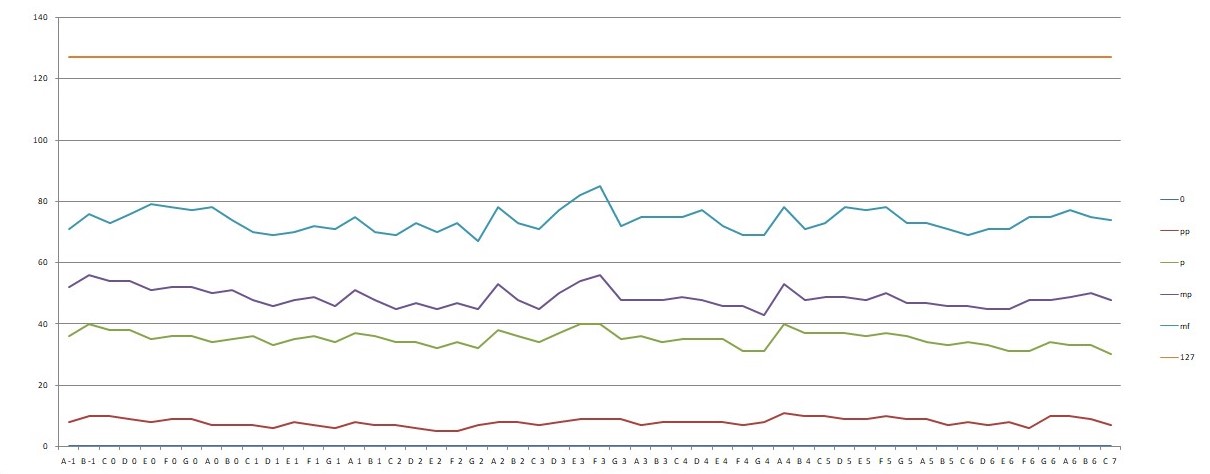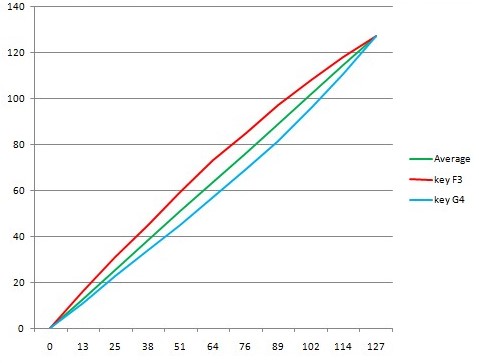Topic: PHA-4 Keyboard (FP-10), keyboard regularity
I tried checking the velocity differences between all the keys on the PHA-4 keyboard of the Roland FP-10 ( only white keys at this time). To do so, I used a straight wooden bar to press all the keys at the same time and at the same speed. I did this test at several velocities but I didn't do it with the high velocities (you have to press very hard on the bar and I didn't want to break my keyboard). It should be noted that the comparison is done at equal speed and not at equal weight as it was done on the VPC1 keyboard. We can see a pretty good regularity all along the keyboard except for some keys. I don't think a real piano keyboard is more regular.
However it is possible to use a software like velpro to obtain a straighter line.


